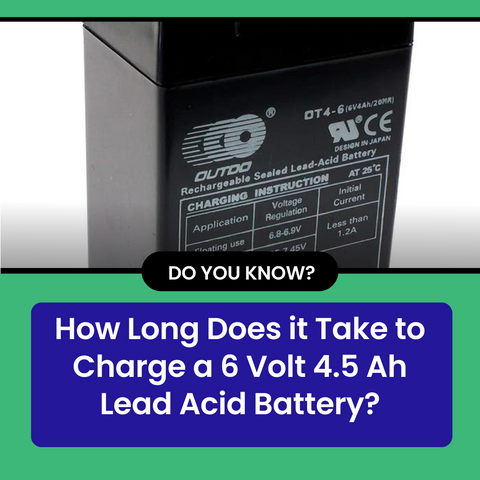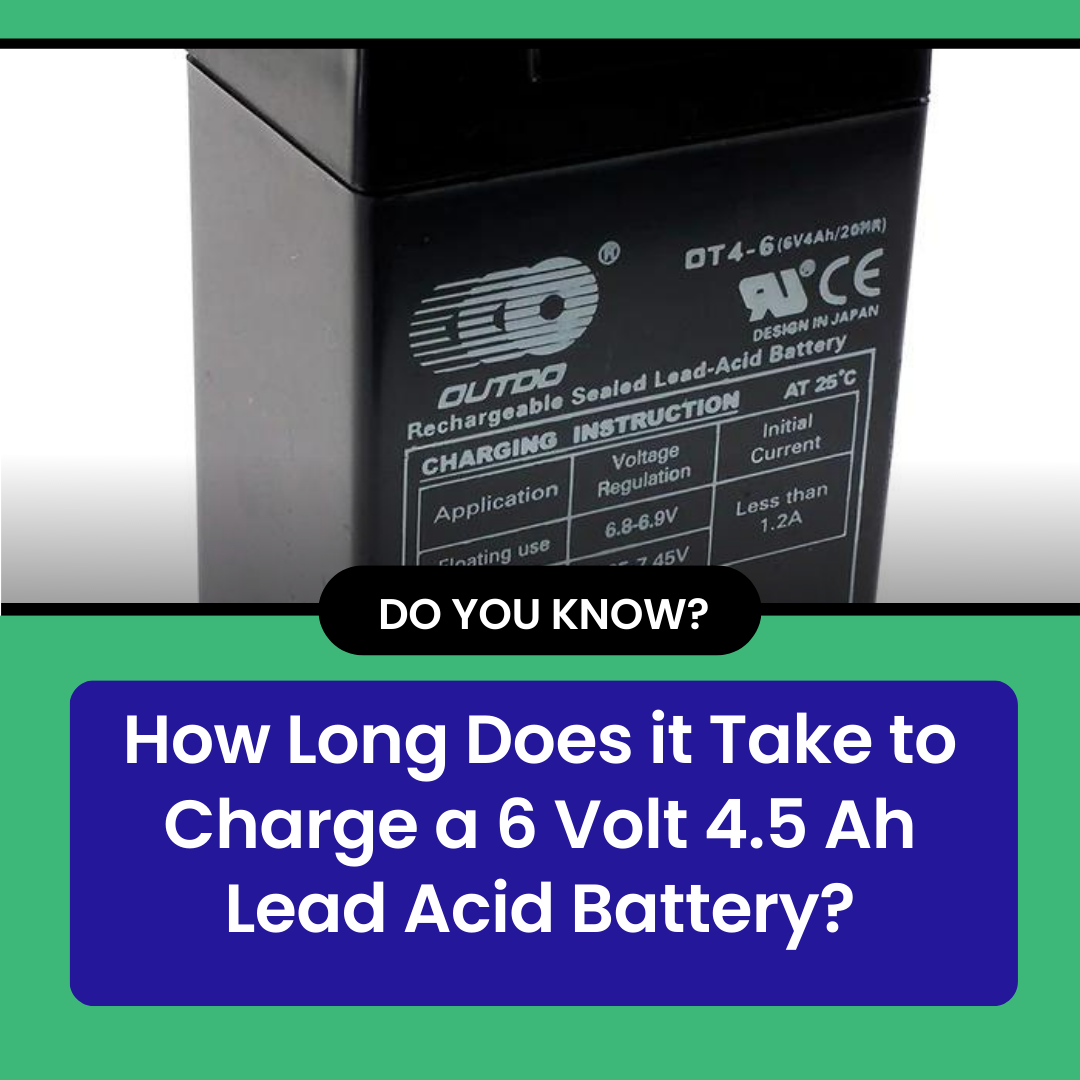Published: June 7, 2023
Updated: March 21, 2025
How Long Does it Take to Charge a 6 Volt 4.5 Ah Lead Acid Battery?
 Pumped for an RC car race or a security system tweak, only to find your 6-volt 4.5 Ah lead acid battery flatter than a pancake? How long ‘til it’s juiced up? Let’s power through the details.
Pumped for an RC car race or a security system tweak, only to find your 6-volt 4.5 Ah lead acid battery flatter than a pancake? How long ‘til it’s juiced up? Let’s power through the details.
Quick Answer
A 6V 4.5 Ah lead acid battery takes 3-4 hours to charge with a standard 1.5A charger—1-2 hours with a fast charger. Times shift with discharge level, charger output, and temp, so follow the maker’s specs.
How Charging Works
Charging zaps electrical energy into the battery, sparking a chemical reaction to reverse discharge—lead sulphate turns back into active juice. Key bits: charger output (amps), battery state, and ambient temp (0°C-40°C is ideal). Curious about ride-ons? See our charging guide.
Charge Times
| Charger Type | Time | Pros/Cons |
|---|---|---|
| Standard (1.5A) | 3-4 hours | Gentle, battery-friendly |
| Fast (3A) | 1-2 hours | Quick, may buckle plates |
Voltage Check
| Voltage | Capacity |
|---|---|
| 6.44V | 100% |
| 6.20V | 60% |
| 5.81V | 0% |
Tip: Full charge hits 6.3-6.4V—use a voltmeter to confirm.
Battery Types Compared
| Type | Charge Time | Lifespan |
|---|---|---|
| Lead-Acid | 3-4 hours | 200-300 cycles |
| Lithium-Ion | 2-4 hours | 500-1000+ cycles |
Why Lead-Acid? Cheaper, heavier—great for steady power, less for weight-sensitive gear.
Safety & Care
Charge right:
- Match the 6V charger—higher volts zap it.
- Ventilate—gases can build up.
- Keep temps 0°C-40°C—extremes slow it.
- Recycle, don’t trash—lead’s toxic. Maintenance tips.

Troubleshooting
Charging woes? Try:
- Check Charger: Ensure 6V compatibility.
- Clean Terminals: Wipe off corrosion.
- Watch Current: Starts at ~150 mA—spikes mean trouble.
- Avoid Overcharge: Unplug at green light.
Wrap-Up
A 6V 4.5 Ah battery charges in 3-4 hours standard—keep it safe, and it’ll power your RC fun or gadgets for years. Kids’ toys need a boost? Hit our ride-ons!
Frequently Asked Questions
How long to charge a 6V 4.5 Ah battery?
3-4 hours with a 1.5A charger—1-2 with a 3A, but gentler’s better.
Can I use a higher voltage charger?
Nope—6V only, or you’ll cook it. Match the specs.
How do I extend its life?
Clean terminals, avoid deep drains, store cool and dry.





Share:
How to Charge a 6V Ride on Car Toy Battery
A Comprehensive Comparison of 6V, 12V, and 24V Toy Car Batteries